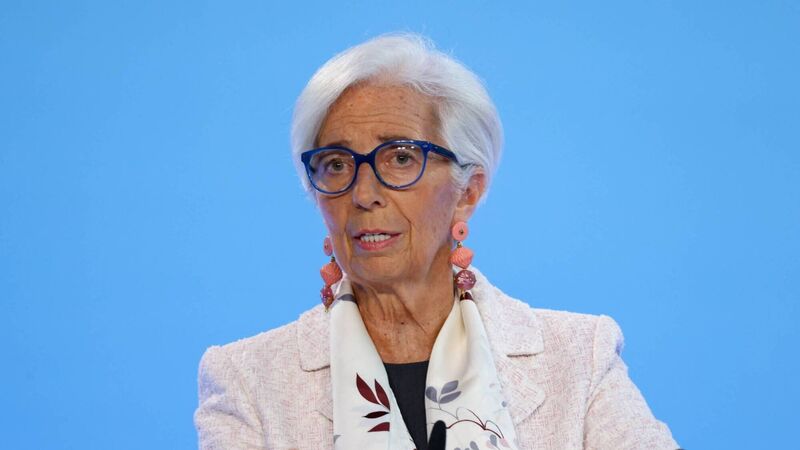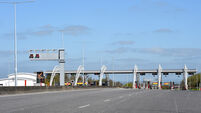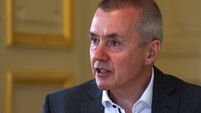Oliver Mangan: Is there light at the end of the rate hike tunnel?

Christine Lagarde, president of the European Central Bank, at a rates decision news conference in Frankfurt, Germany, on Thursday. Markets are a bit less sure that eurozone rates have peaked. They are not expecting a rate hike at the next ECB meeting in September. Picture: Alex Kraus/Bloomberg
Markets remain of the view in the aftermath of the last week’s Fed and ECB policy meetings — which saw them both raise interest rates by 25bps — that the rate hiking cycles in the US and eurozone have either drawn to a close or are very close to the end.
US futures contracts see Fed rates rising by just a further 9bps over the remainder of the year, bringing them up to 5.42%. This is still within the new 5.25-5.50% range for the fed funds rate and implies no further increase in official rates.
Markets are a bit less sure that eurozone rates have peaked. They are not expecting a rate hike at the next ECB meeting in September, but contracts see rates being around 15bps higher by the end of the year, suggesting investors are hedging their bets about a possible 25bps hike in the fourth quarter.
It is noteworthy that both central banks are no longer providing guidance for markets on the near-term path for interest rates, and instead have adopted a data-dependent approach to future policy decisions. This allows them to keep their options open about whether or not rates need to be raised further.
There is much optimism in US markets that with headline inflation having fallen sharply and core inflation now on a moderating path, the Fed’s rate tightening job is done.
The Fed meeting statement, though, simply noted inflation remains elevated. More pertinently, Fed chair Jerome Powell commented that getting inflation back down to its 2% target, “is likely to require a period of below trend growth and some softening in labour market conditions”. This has not been the case in the first half of 2023.
GDP grew by 2% and 2.4% annualised in the opening two quarters of 2023. This is above-trend growth for an economy at full employment. In this regard, the unemployment rate stood at 3.6% in June, within the very low 3.4-3.7% range it has occupied since March 2022.
Unless these data soften appreciably in the second half of the year, the Fed may well hike rates again, even if inflation remains on a downward path.
Indeed, the Fed’s own interest rate projections published in June, show it expects rates will be raised to a 5.50-5.75% range by the end of the year, implying one more rate hike. Thus, we are surprised that markets are attaching such a low probability to the likelihood of another US rate hike.
Meantime, markets are going some way towards pricing in a further 25bps hike from the ECB, notwithstanding the weakness in activity since last autumn. The main focus for the ECB is likely to remain on underlying inflation, with the core HICP rate both sticky and high at about 5.5%. This is a long way above the 2% target.
The ECB is taking some comfort from the fact that rate hikes are resulting in a tightening of financial conditions, which is dampening demand, and should help bring inflation back down towards target.
However, the ECB will need to see evidence of this in inflation data over the next few months, including wages and labour costs, if policy is to be put on hold.
The next set of ECB staff economic projections, which are due in September, would also likely need to see inflation forecasts revised lower. It is not surprising then, that the ECB has left its options open about raising rates again.
- Oliver Mangan is chief economist with AIB














